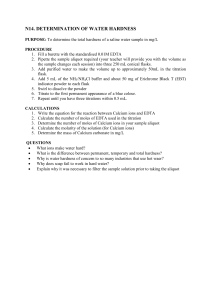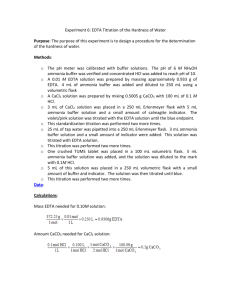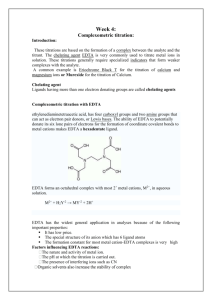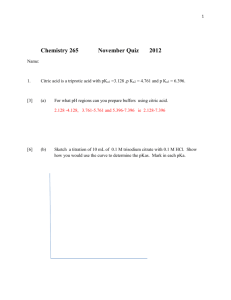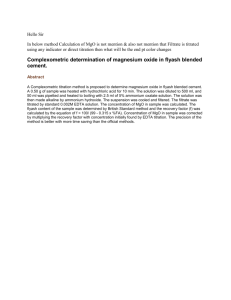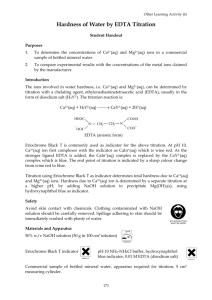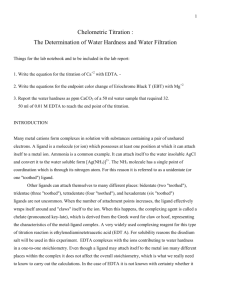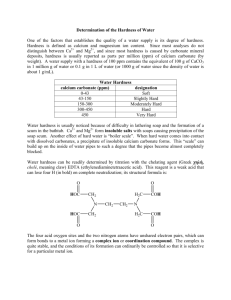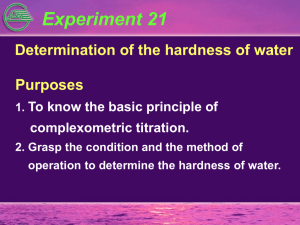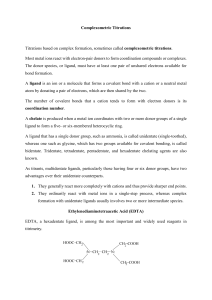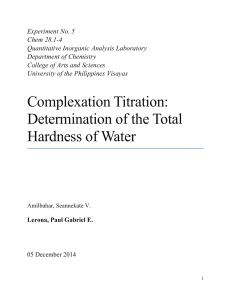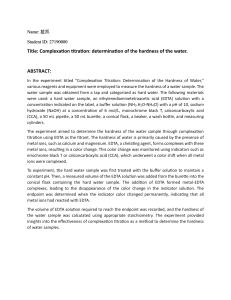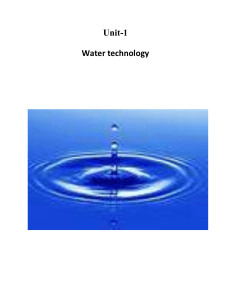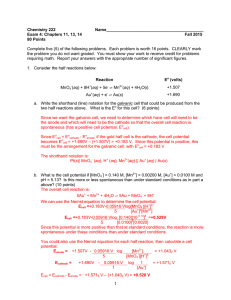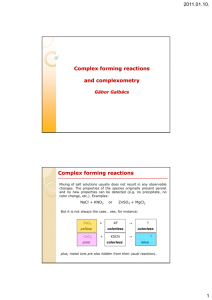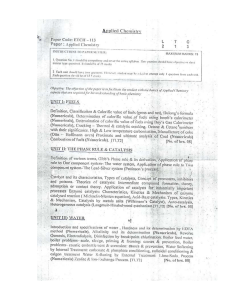Group 3 CONCURRENT DETERMINATION OF MAGNESIUM IONS
advertisement
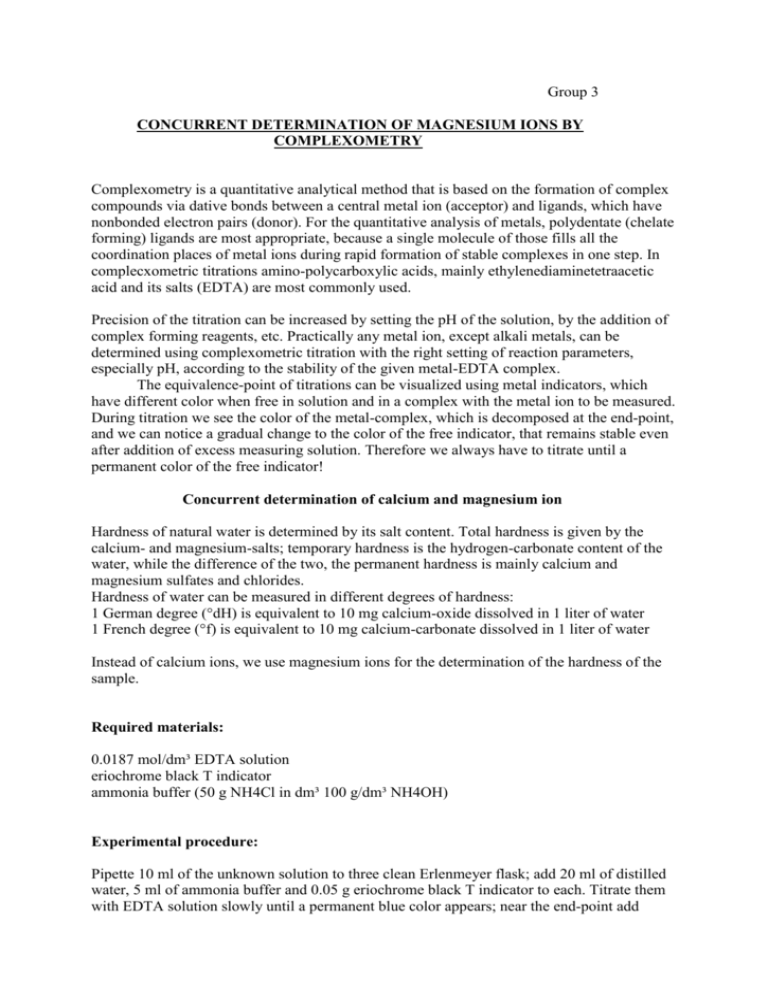
Group 3 CONCURRENT DETERMINATION OF MAGNESIUM IONS BY COMPLEXOMETRY Complexometry is a quantitative analytical method that is based on the formation of complex compounds via dative bonds between a central metal ion (acceptor) and ligands, which have nonbonded electron pairs (donor). For the quantitative analysis of metals, polydentate (chelate forming) ligands are most appropriate, because a single molecule of those fills all the coordination places of metal ions during rapid formation of stable complexes in one step. In complecxometric titrations amino-polycarboxylic acids, mainly ethylenediaminetetraacetic acid and its salts (EDTA) are most commonly used. Precision of the titration can be increased by setting the pH of the solution, by the addition of complex forming reagents, etc. Practically any metal ion, except alkali metals, can be determined using complexometric titration with the right setting of reaction parameters, especially pH, according to the stability of the given metal-EDTA complex. The equivalence-point of titrations can be visualized using metal indicators, which have different color when free in solution and in a complex with the metal ion to be measured. During titration we see the color of the metal-complex, which is decomposed at the end-point, and we can notice a gradual change to the color of the free indicator, that remains stable even after addition of excess measuring solution. Therefore we always have to titrate until a permanent color of the free indicator! Concurrent determination of calcium and magnesium ion Hardness of natural water is determined by its salt content. Total hardness is given by the calcium- and magnesium-salts; temporary hardness is the hydrogen-carbonate content of the water, while the difference of the two, the permanent hardness is mainly calcium and magnesium sulfates and chlorides. Hardness of water can be measured in different degrees of hardness: 1 German degree (°dH) is equivalent to 10 mg calcium-oxide dissolved in 1 liter of water 1 French degree (°f) is equivalent to 10 mg calcium-carbonate dissolved in 1 liter of water Instead of calcium ions, we use magnesium ions for the determination of the hardness of the sample. Required materials: 0.0187 mol/dm³ EDTA solution eriochrome black T indicator ammonia buffer (50 g NH4Cl in dm³ 100 g/dm³ NH4OH) Experimental procedure: Pipette 10 ml of the unknown solution to three clean Erlenmeyer flask; add 20 ml of distilled water, 5 ml of ammonia buffer and 0.05 g eriochrome black T indicator to each. Titrate them with EDTA solution slowly until a permanent blue color appears; near the end-point add EDTA solution drop wise, so as the color change does not occur instantly. From the difference between the current and the previous titration, you can calculate the amount of magnesium. Calculate how many mg of magnesium were in the original unknown and also the hardness of the solution diluted to 100 ml in German degrees. Measurements: 1st titration: 17.9 ml of EDTA 2nd titration: 17.9 ml of EDTA 3rd titration: 17.6 ml of EDTA 4th titration: 18.2 ml of EDTA average value: 17.9 ml of EDTA Calculations: One mol of EDTA equals one mol of calcium-oxide. c = n/V 0.0187mol/l = n / 0.0179l n = 3.3473*10-4 mol of calcium-oxide n = m/M M(CaO) = 56.0774 g/mol 3.3473*10-4 mol = m / 56.0774 g/mol m = 0.01877 g of calcium-oxide = 18.77 mg of calcium-oxide There were 18.77 mg of calcium-oxide in 10 ml of the solution so there were originally 187.7 mg in the unknown sample since we took one tenth of it for the titration. 1 mg of calcium-oxide dissolved in 100 ml of water is equivalent to 1 German degree (°dH) The unknown sample diluted to 100 ml has a hardness of 187.7°dH.
